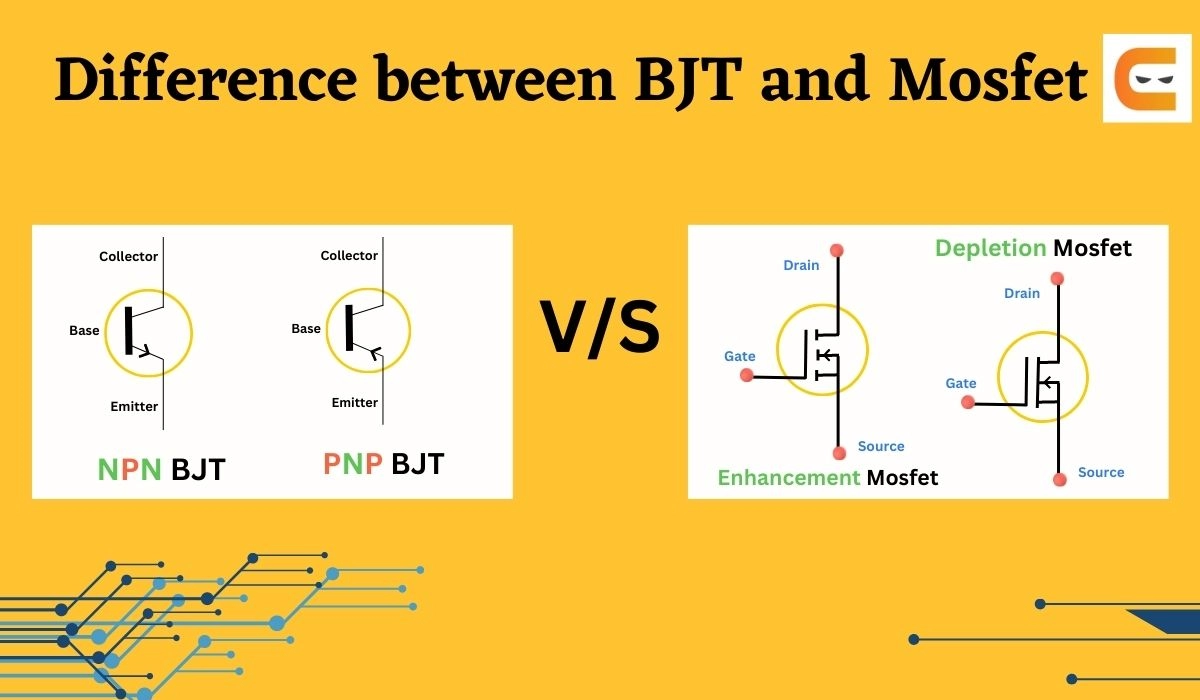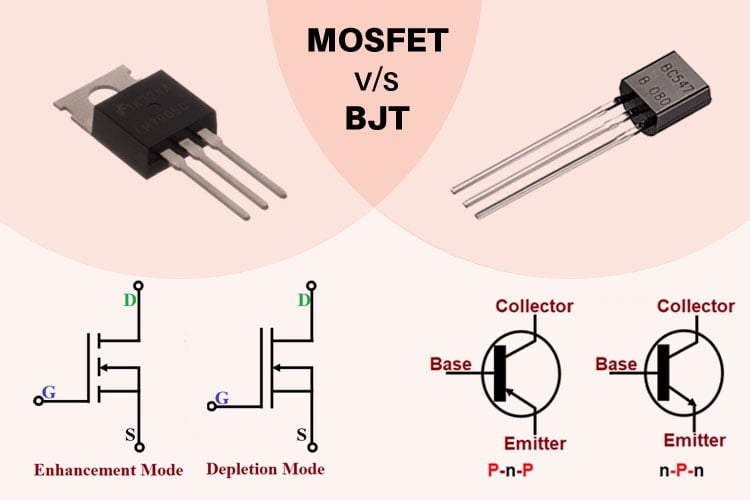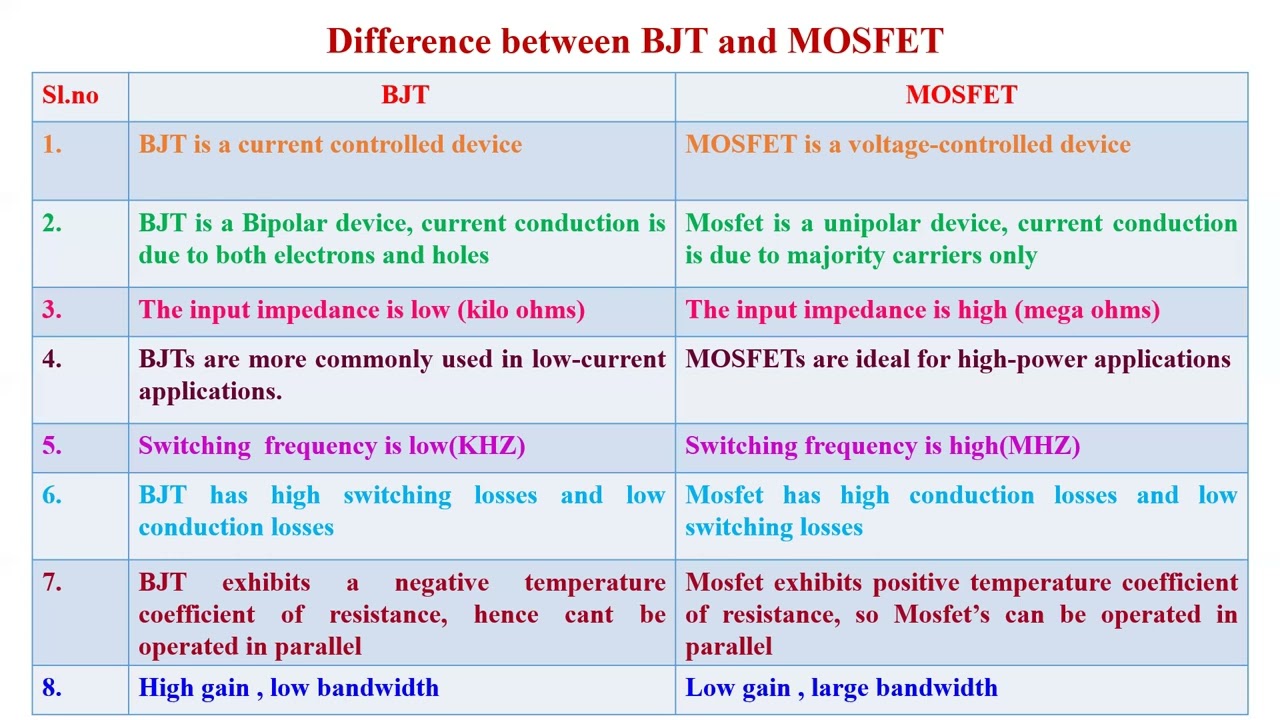Alright folks, today I finally sat down to figure out this whole BJT vs MOSFET puzzle ’cause man, I keep getting tripped up when I gotta pick one for a circuit. Felt like time to get my hands dirty instead of just reading theory.

The Spark That Lit the Fire
So last week, I was messing around with this little motor driver circuit idea I had. Thought I’d be smart and swap in a MOSFET where the guide used a BJT. Looked similar enough, right? Plugged it in, powered up… and bang. Fried the thing. Smoke, the whole deal. Felt like an idiot. That dead motor controller board sitting on my bench? That was my $300 “learning opportunity.” Boss wasn’t exactly thrilled about that project budget vanishing. That’s when it hit me – I really didn’t know when to grab which transistor. Time for some real practice.
Getting My Hands Dirty (Again)
Started simple. Dug out a breadboard, a 5V power supply, some basic resistors, LEDs, and grabbed a general-purpose NPN BJT and a small logic-level MOSFET – the kind you find in hobby shops. Didn’t overthink the specs, just wanted common stuff.
First experiment was pure brute force: making stuff turn on. Connected the BJT first. Wired it up like this:
- Base hooked to my little controller board with a 1k resistor in between.
- Collector pin to the positive side of my circuit.
- Emitter pin to the LED (with a resistor!) and then to ground.
Flicked the controller output pin to HIGH. Boom, LED lit up nice and bright. Easy. Good ol’ BJT.
Then, pulled the BJT out and slotted the MOSFET in its place. Tried to wire it kinda the same way at first:

- Gate pin to the controller with a resistor (by habit).
- Drain pin to the circuit positive.
- Source pin to the LED/resistor combo to ground.
Flipped the controller pin… LED stayed dead. Huh? Double-checked wiring. Confirmed the MOSFET datasheet – it definitely should work at 5V. Started poking around with the multimeter. Saw voltage at the Gate… okay, so signal’s getting there. Checked the Source… weirdly low. Then it dawned on me. Pulled the resistor out of the Gate line entirely. Went straight from controller pin to Gate. Flicked the pin again. Bam! LED on. Instantly. Felt kinda stupid, but learned something massive: MOSFET gate sucks almost no current. That resistor? Totally unnecessary here, unlike the BJT where you need it to limit base current. Blew my mind how little juice it needed to take control.
Pushing Them Further
Okay, basic switching worked. But what happens when they work harder? I swapped the tiny LED for a bigger one that draws more current. Ran my little control setup again. Both turned it on, sure. But I kept my fingers on the transistors.
- The BJT? Started getting noticeably warm after just 30 seconds of running the bigger load. Like “coffee’s a bit too hot to gulp” warm.
- The MOSFET? Felt cool. Like, barely any temperature change at all. Left it running a few minutes – still cool. That physical difference was stark. MOSFET was way more chill under load.
The Control Feeling
Last bit: how precisely could I control the flow? Set up a simple variable voltage source on the BJT base (carefully!). Watched the LED brightness as I slowly turned the voltage knob up. It wasn’t smooth. It kinda went from dim to bright in a jumpy way around a certain point, not a nice fade. Like a cheap knob with steps.
Switched back to the MOSFET setup. Did the same thing, slowly turning up the Gate voltage from zero. This time, the LED faded perfectly. Like turning up a studio dimmer – super smooth from completely off to full blast. Crystal clear. So much better for dialing in an exact brightness level. That smooth control is a MOSFET party trick.
What My Fried Board Taught Me (The Lightbulb Moment)
Sitting back, looking at the mess of wires and parts, it all clicked together like the pieces of my exploded circuit last week.

- Need a simple, rugged switch for heavy currents where you don’t care about super fine control, and you can handle a bit of power getting turned into heat? BJT‘s your workhorse. Feels tough.
- Need something super efficient that doesn’t get hot, controls big power with barely any signal current, or needs really smooth, precise adjustment (like dimming lights, speed control)? That’s MOSFET territory. Graceful and efficient.
My motor driver disaster? I mindlessly shoved a MOSFET into a role designed for a BJT, ignoring how they fundamentally behave differently. That failed swap cost me a week’s salary and a chunk of pride. Lesson learned the hard way: You don’t just randomly swap them. You pick the right tool for the job based on what it actually does best.

